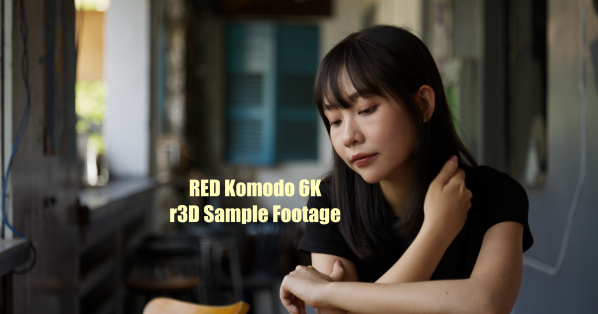We’ve heard respected colorists say that HDR is no more than an effect added in post and that the cinematographer doesn’t have to do anything differently on set. Similarly, there are DPs who insist that all you’ve got to do is expose for 18% gray and let the rest roll off. Neither of which is... Continue Reading →
Compare Dolby Vision Derived SDR Version To HDR10 Video
https://youtu.be/H_SChOvwIW0 HDR10 version Dolby introduced an improved tone mapping analysis algorithm that first appeared in DaVinci Resolve Studio 18.6. If you'd like to compare the Dolby Vision derived SDR version to the HDR10 video above, click here. As far as we can tell, it only appears to be playable on Dolby Vision enabled devices, because... Continue Reading →
Why Netflix Dolby Vision Looks Like Puke, Part I
In HDR video, there is no artifact more repugnant than blown-out highlights. All that is required to avoid them is for the DP not to clip the signal, but many simply refuse to learn their craft. These issues ought to have been spotted during pre-production or when reviewing dailies and they most certainly should not... Continue Reading →
The Benefits Of Shooting 8K
Alister Chapman writes about the advantages of 8K and muses whether The Creator shouldn’t have been shot on the Sony A1 rather than the FX3: “Since the launch of Burano I've become more and more convinced of the benefits of an 8K sensor - even if you only ever intend to deliver in 4K, the... Continue Reading →
NBCU Sr. Colorist: HDR Will Make Your Eyes Bleed
Perhaps the dumbest colorist we've had the displeasure of listening to since Maxine Gervais. Like nearly all SMPTE productions, the audio and video quality of the presentation are complete and utter garbage. "Most of the clients that I have that come in, they don't like HDR straight away, and the reason that they don't is... Continue Reading →
Free Download: RED Komodo R3D RAW Sample Footage
https://youtu.be/kKSrUCp4NsA R3D RAW HDR Video Details: Model: Ngô Hài Hà. RED Komodo 6K. Meike super35 50mm T2.1 Cinema Prime. Kolari ND3. 6K 17:9 R3D MQ ISO 400, 24 FPS, T2.1. Edited in DaVinci Resolve Studio 18.6. MacBook Pro (late 2021), LG CX. ISO changed from 400 to 250 in post. No noise reduction.
A Fundamental Difference Between SDR & HDR
“The cinematographer’s job to do good HDR is don't clip the signal.” Juan Cabrera, Senior Colorist & Founder at LightBenders From On the Calculation and Usage of HDR Static Content Metadata by Michael D. Smith and Michael Zink “A simple histogram analysis shows the distribution of pixel values within an image and can be used... Continue Reading →
Dolby Vision Profile 20
Profile 20 is the first Dolby Vision profile which supports MV-HEVC and enables the delivery of Stereoscopic (3D) video. All other Dolby Vision profiles only support monoscopic (2D) video, whereas profile 20 is able to carry stereoscopic views and target new devices and use cases. Dolby Vision profile 20 brings forward new capabilities for playback... Continue Reading →
Maxine Gervais & Josh Pines Talk HDR
Evolution of Tech & HDR, a segment from the YouTube series ‘Color Masterclass with Joshua Pines and Maxine Gervais’ produced by Portrait Displays, coincided with Netflix’s release of The Brothers Sun, which was graded by Maxine Gervais. Joshua Pines claims that when HDR was in its infancy, all studios endeavored to make the brightest grades... Continue Reading →
The Brothers Sun: The Worst Cinematography Of 2024?
“I like 20Ks and T12s pounding through windows.” DP C. Kim Miles "The show is one of the first important TV releases of the year 2024 on Netflix after its launch on January 4, 2024. The Brothers Sun received a score of 85% on Rotten Tomatoes..." - The Economic Times After reading interviews with cinematographer C.... Continue Reading →
High Brightness: The Fly In The Ointment
There’s one crucial aspect that researchers who conducted the viewer brightness preference studies we’ve shared overlooked, and that is 24p motion judder. We doubt that participants in the studies would have preferred 4,000 nits over 1,000 nits had they been shown clips of actors walking in front of bright windows, as students do in the... Continue Reading →
Is Shadow Detail Really HDR’s Greatest Advantage?
“HDR's consumer appeal is based upon image elements that are considerably brighter than the portrayal of diffuse white, having as much as three or five times higher luminance.” Charles Poynton “A High Dynamic Range System (HDR System) is specified and designed for capturing, processing, and reproducing a scene, conveying the full range of perceptible shadow... Continue Reading →
Study Finds Substantial Preference For 4,000 Nits Over 1,000 Nits
Subjective Quality Evaluation of High Dynamic Range Video and Display for Future TV by Philippe Hanhart, Touradj Ebrahimi, Pavel Korshunov and Yvonne Thomas. SMPTE Motion Imaging Journal, May 2015 The following excerpts are from a study carried out at the European Broadcasting Union and École Polytechnique Fédérale de Lausanne in 2015. Why 100, 400, 1000 and... Continue Reading →
Dolby Vision Analysis Tuning Feature in Resolve Studio 18.6
This feature introduces a new and improved analysis algorithm that allows colorists to select the strength of highlight retention and the amount of mapping applied. Users can now choose from a predefined set of spatial filters. Selecting the "Legacy CM4 L1" option matches the analysis of the original CMv4 algorithm. Older projects from software versions... Continue Reading →
No, Josh. Not Right.
"Every year there's some new technological thing that's going to change the world, like you know, when sound entered or color; so you know it's like, 'Oh, digital cameras!' Like yeah, right. Or you know, digital projection, 3D stereoscopic, uh you know and some of them have legs and stay and some of them are Smell-O-Vision:... Continue Reading →
Josh Pines and Maxine Gervais Talk HDR
https://youtu.be/jIw0RNIJJX0?si=PCcu-SrozX-hzjHM&t=165 “One of the problems is, they [SDR and HDR] look different, so if you’re doing a movie or episodic, can you simultaneously think about making two things that look different? Usually there’s a vision, there’s a creative intent, that you want preserved across all the things… so what we wound up having to do... Continue Reading →
Canadian Media Engineer Confirms That LG Has Not Rolled Out FW Update To Disable G3 Auto-Dimming Beyond USA
“Hi, my names Rich and I'm a media engineer for Animal Logic in Vancouver, Canada. One of our DI colorists told me about your website and forums [liftgammagain], so I thought I'd share what we've been doing in order to try and turn off the fabled dimming on the LG G3. We got a Canadian... Continue Reading →
Hollywood Colorists: TV Marketing Is Wrong. With HDR The Important Thing Is Not Brightness
Panasonic, which has been partnering with Company3 CEO Stefan Sonnenfeld since 2017, invited reviewers to visit the post-production house to promote their TVs. Paolo Centofanti of the Italian tech website DDay.it writes: "According to the colorists of Company 3, the company responsible for the post-production of 80% of Hollywood series and movies, you don't need... Continue Reading →
How Ads Limit Dynamic Range
At the close of episode 3 of the Korean zombie series All of Us Are Dead, the beam of a helicopter searchlight gradually grows larger as the chopper approaches the high school where undead are feasting on classmates until the entire screen is engulfed by blinding white light, and we were eager to see what... Continue Reading →










